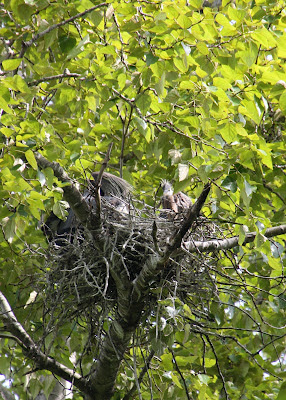2005 Stream Map
City of Redmond Stream Classification Definitions
Updated Opinion, 3/14/09: A couple of weeks ago I gave testimony to the Planning Commission and staff during a Public Hearing. The Hearing was a final step in the public process of approving the revised "Stream Map". The Critical Area Ordinance (
CAO) requires cities in Washington map out their "critical areas" (streams, wetlands, flood plains, geological hazards, and aquifer recharge zones).
The Stream map is a city guideline to help developers, landowners, citizens, and "qualified consultants" rank our streams according to their value and function. Value is mostly defined by the presence or absence of fish species. A Class I "Shorelines of the State" streams (
Sammamish River, Bear & Evans Creek) have the highest value owing to their size and presence of Federally endangered Chinook and other salmon. Class II streams, like
Kempen Creek in NE Redmond provide habitat for "
salmonid" ( salmon,
steelhead, bull trout) and fish. Class III streams as in
Perrigo Creek of Hartman Wetlands, have no fish nor potential for fish. Streams are buffered from land use development according to their classification (and usually size) with Class III getting the least amount of buffer
So what does all this have to do with
Kempin Creek - the subject of an
earlier post?
Kempin Creek is unusual because it crosses county-city jurisdictions. In the county, qualified fish and wildlife biology consultants determined during a land use proposal that
Kempin Creek harbored
salmonid fish and should have buffers equal in size to Redmond's Class II stream rating. However, during the
CAO Stream map revisions, city staff downgraded
Kempin Creek to Class III when it flowed downstream from the county into Redmond.
But then something weird happens. Several hundred feet further downstream this Class III segment of
Kempin Creek is classified a Class II stream again! Question. How can
salmonid fish swim up
Kempin Creek from Bear Creek, then swim to where they are not supposed to be (the Class III segment) only to re-enter fish bearing waters of
Kempin Creek of King County?!
Below is a chart of
Kempin Creek's city classification from it's source in King County downstream to Bear Creek.
Creek- County Class22222- City Class333333333333- Class22222 Class1111Bear Creek
upstream in county (fish-2)...... at Redmond border (no fish-3)- then (fish-2 again) further downstream to Bear Creek class 1111 (fish-1).
Note the Class 3 segment containing no fish, yet
salomonid are upstream.! How does the the city's best science explain that!
The map is a guideline and I wouldn't make a big deal of this were it not for the city's misuse of "Best Available Science" (BAS). According to the Critical Area Ordinance, "Best Available Science" (BAS) is to be used during land use projects when classifying streams and other critical areas. City stream classification changes are triggered when a "qualified consultant" is hired by a developer for a project. In this case, the developer was
CAMWEST. The BAS for
Kempin Creek proved the developer's consultant
misclassified the creek. A King County qualified biologist proved
salmonid were present upstream in the King County segment. Thus, by best science,
salmonid have to be present downstream -- all the way to Bear Creek. But for some bureaucratic reason the city's lesser
"Washington Trout" mapping data
pre-
empted the Best Available Science provided by the county. Most importantly, re-classification of the stream mapping guide is is etched by land-use development triggers, not by cartography. As a result, the city presents an embarrassing, illogical mapping of
Kempin Creek and a flagrant disregard for
Best Available Science.
Some good news: Wise Planning Commissioners recommended that hydrology surrounding Redmond Creeks near the county be monitored. Another Planning Commissioner (KP) recommended stream temperatures be monitored as a city indicator of water quality and fish health.
Fishing Tip: if you're looking for a good fishing hole might try the city's Class III "no fish" segment of
Kempin Creek. Your won't find staff fishing there! But, check with
WDFW first to see if
Kempin is
fishable.
Redmond Code: 20D.140.20.-010 - Redmond's Class III streams connected to tributaries are streams without fish and without any potential to support fish or salmonids. They connect to downstream salmonid-bearing Class II and Class I streams. While these streams don’t contain fish themselves, they can be critical “headwater streams,” providing cold, clean water to the salmon-bearing streams into which they flow, further downstream.
Kempin Creek - the stream with a split personality, Part 1
CC: R.
Odle, Planning Director, C. Beam, Environmental planner,
PlanningCommission@redmond.gov















